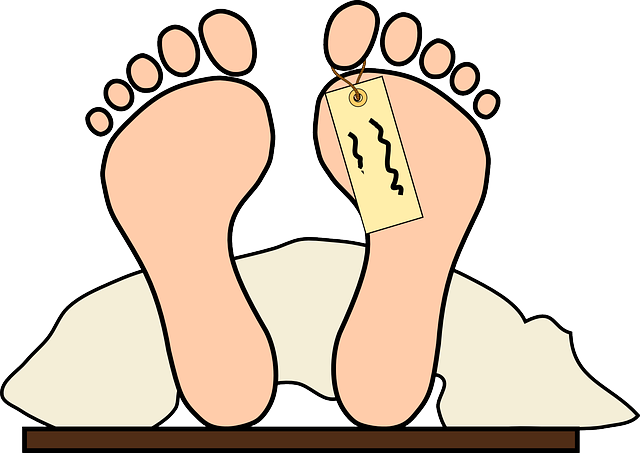Skin tags, common growths on neck, armpits, and groin, can be prevented and managed in London through lifestyle adjustments like wearing loose-fitting natural fabrics, maintaining good hygiene, and avoiding friction. Topical treatments and home remedies, such as salicylic acid creams, glycolic acid, vitamin C products, apple cider vinegar, and essential oils, offer initial management options. Professional services like cryotherapy and laser treatments are available for safe removal under dermatological guidance. Proper post-removal care, including clean and dry treatment areas, emollient creams, aloe vera gel, sun protection, and monitoring for recurrence, is crucial.
Skin tags, those small, soft skin growths, might be harmless but can be a source of embarrassment. In this comprehensive guide, we’ll show you how to prevent and manage them effectively. From understanding their causes and types to exploring lifestyle changes, topical treatments, safe removal methods, and post-care tips, we’ve got you covered. Say goodbye to unsightly skin tags in London with our expert advice.
- Understanding Skin Tags: Causes and Types
- Lifestyle Changes to Prevent Skin Friction
- Topical Treatments and Home Remedies
- Safe and Effective Removal Methods
- Post-Removal Care: Preventing Recurrence
Understanding Skin Tags: Causes and Types
Skin tags, also known as acrochordons, are small, soft skin growths that typically appear on the neck, armpits, and groin areas. They are usually harmless but can be a source of embarrassment for many people. Understanding their causes is the first step in preventing them from forming or managing existing ones effectively.
There are several types of skin tags, with the common variety being acral, which often occurs on the hands and feet. They can also develop due to friction or irritation, such as chafing from clothing or jewelry. Hormonal changes, obesity, and certain skin conditions like eczema might also contribute to their formation. In London, where Skin Tag Removal services are readily available, it’s important to consult a professional for accurate diagnosis and suitable treatment options if they cause discomfort or aesthetic concerns.
Lifestyle Changes to Prevent Skin Friction
Skin tags, often a result of friction, can be reduced by adopting certain lifestyle changes, especially in a bustling city like London where skin against skin contact is more frequent. Opting for looser-fitting clothing made from natural fabrics can significantly decrease friction on the skin. This simple change can be particularly effective for those who spend long hours sitting or standing, as it reduces the constant irritation that leads to skin tag development. Additionally, maintaining good hygiene practices and keeping the skin clean and dry prevents a buildup of moisture, which can also contribute to tag formation. Regularly bathing and using gentle, fragrance-free cleansers are recommended.
Topical Treatments and Home Remedies
Many people turn to topical treatments and home remedies as a first line of defence against skin tags, especially in London where skin tag removal services are readily available. While professional treatments offer effective results, certain over-the-counter options can help manage and reduce their appearance. Topical creams containing salicylic acid or lactic acid can be beneficial, as these exfoliants help peel away dead skin cells, which can contribute to the growth of tags. Additionally, products with glycolic acid or vitamin C can enhance collagen production, potentially improving skin texture and reducing the visibility of tags over time.
Home remedies, though often less potent, offer natural alternatives. Some people find success with apple cider vinegar, applied topically and left to soak into the skin. Others use tea tree oil, known for its antimicrobial properties, which may help prevent infection and inflammation associated with skin tags. Additionally, certain essential oils like lavender or eucalyptus are believed to possess anti-inflammatory qualities, offering a soothing and potential treatment option for those seeking London skin tag removal without professional intervention.
Safe and Effective Removal Methods
When it comes to preventing skin tags from forming, understanding safe and effective removal methods is key. In many cases, these small, soft skin growths can be prevented by maintaining good hygiene and avoiding friction against sensitive areas, especially in the folds of the skin. Regular cleansing and keeping the skin dry, but not overly tight, can significantly reduce the chances of skin tags appearing.
In London, where skincare services are highly accessible, there are several professional options available for safe removal. Cryotherapy, using liquid nitrogen to freeze off tags, is a common and generally painless method. Laser treatments offer another option, targeting the blood vessels that feed the tags for effective removal. It’s always recommended to consult with a dermatologist or qualified skin care specialist in London for personalized advice on both prevention and safe removal techniques.
Post-Removal Care: Preventing Recurrence
After successfully removing skin tags, proper post-removal care is essential to prevent their recurrence in London Skin Tag Removal procedures. The first step is to keep the treated area clean and dry. This involves gently washing with a mild soap and water, avoiding harsh scrubs or products that might irritate the skin. Pat the area dry with a soft, clean towel, taking care not to scratch or disturb it.
Additionally, applying a light layer of emollient cream or aloe vera gel can help soothe the skin and reduce potential scarring. It’s crucial to avoid exposing the treated area to direct sunlight for an extended period; wear protective clothing outdoors. Regular monitoring is also key; inspect the skin periodically for any signs of new tags or unusual changes. If you notice any, consult a professional immediately to address them promptly.
Skin tags can be an unsightly concern, but with the right strategies, their formation can often be prevented. By understanding their causes and types, implementing lifestyle changes to reduce skin friction, exploring topical treatments and home remedies, and considering safe removal methods, you can take control of your skin health in London. Remember, proper post-removal care is key to preventing recurrence. With consistent prevention tactics, you can enjoy smoother, tag-free skin.
